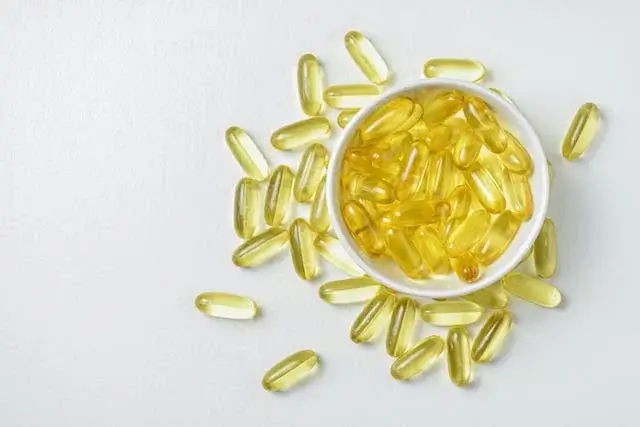Vitamin D, aka the “sunshine vitamin,” is a nutrient with a long list of benefits. It strengthens the immune system, boosts your mood, and is critical for healthy bones. And thanks to recent research, there’s another benefit to add to that list: migraine prevention. Studies show that people with migraine are often deficient in vitamin D.
In this article, we’ll break down what the research says and whether using vitamin D for migraine prevention is worth trying.
Does Vitamin D Help Migraine? What the Science Says
Today, vitamin D deficiency is all too common. In fact, roughly 35% of US adults are running low on vitamin D. Low levels of vitamin D can lead to depression, muscle weakness, bone pain, and yes – migraine. Vitamin D deficiency is more common in people who suffer from headaches, especially migraine.
According to a 2019 scientific review from Neurological Sciences, vitamin D deficiency occurs in between 45-100% of migraine patients. And as vitamin D levels decrease migraine frequency increases. But here’s the good news. The review also found that supplementing with 1,000 to 4,000 IU of vitamin D reduced the frequency of migraine attacks. Other research supports this.
One study tracked 48 migraine patients over 24 weeks. Some took 100 micrograms of vitamin D (4,000 IU), while others took the placebo. Participants then tracked their migraine attacks and symptoms in a migraine diary. Those in the vitamin D group had a significant decrease in migraine frequency compared to the control group. However, they didn’t see any benefits for migraine severity.
Yet other research does. One meta-analysis reviewed five clinical trials on vitamin D and migraine. They found vitamin D supplementation greatly reduced the frequency of migraine attacks, the number of migraine days, and headache severity.
Another 2020 study from The Journal of Headache and Pain tracked 80 episodic migraine patients over 16 weeks. Half were given a placebo and half were given 2,000 IU of vitamin D. Those taking vitamin D had significant symptom relief and less disability compared to the placebo. What’s more, CGRP levels decreased in the vitamin D group. CGRP, or calcitonin gene-related peptide, is a protein made in the brain. When released, it causes inflammation in the meninges, protective tissues that cover your brain. Many believe CGRP is partly to blame for migraine pain.

Vitamin D and Migraine: What’s the Link?
Clearly, there’s a relationship between vitamin D and migraine. But for now, scientists aren’t sure why. Yet there are several theories:
Improves magnesium absorption
People with migraine tend to have lower levels of magnesium, a mineral involved in nerve transmission. Research reveals that supplementing with magnesium helps reduce the frequency of migraine attacks.
But here’s the catch. For magnesium to be properly absorbed, your body needs vitamin D. So increasing your vitamin D status may boost your magnesium levels. This may, in turn, aid in migraine prevention.
Helps regulate neurotransmitters
Vitamin D influences several neurotransmitters in the brain, including dopamine and serotonin. Low serotonin levels are thought to play a role in migraine.
Lowers inflammation
Vitamin D has antioxidant effects and reduces inflammation in the body. And inflammation is one piece of the migraine puzzle. Inflammation can activate the trigeminal nerve, which may trigger migraine attacks.
Reduces nitric oxide
Vitamin D decreases the production of nitric oxide. This compound affects nerve transmission and causes your blood vessels to dilate. Many believe nitric oxide plays a role in migraine.
Influences pain
People with low vitamin D levels tend to experience more pain. Researchers aren’t sure why. But some believe it’s due to vitamin D’s role in regulating neurotransmitters. Vitamin D supplements are often recommended for those suffering from chronic pain.
Vitamin D2 vs. D3: What’s the Difference?
Vitamin D comes in two forms: D2 and D3. Vitamin D2 is made by plants and fungi, while vitamin D3 is found in some animal foods. Your skin also makes vitamin D3 via sun exposure. More on that later.
Both forms can help boost your vitamin D status. Since vitamin D2 is cheaper, this form is commonly added to fortified foods. Vitamin D3 tends to be more effective at raising vitamin D levels. So many supplements come in the D3 form.
Sources of Vitamin D

If you’re concerned you’re low on vitamin D there are many ways to get your levels back on track.
Sun exposure
Vitamin D is nicknamed the “sunshine vitamin” for good reason. When you expose your skin to sunlight, your body makes vitamin D naturally.
Getting regular sun exposure is one of the easiest ways to boost your vitamin D levels. For the most benefits, your skin should be free of sunscreen. Aim for at least 10-30 minutes of sun exposure a few times a week.
Foods
If you live in an area where sunlight is scarce, you can add more vitamin D-rich foods to your diet. These include:
- Salmon
- Cod liver oil
- Trout
- Mushrooms
- Sardines
- Eggs
- Tuna
- Vitamin D-fortified milk (dairy, almond, soy, and oat)
Supplements
Taking a vitamin D supplement is a simple way to keep your levels in a healthy range. When choosing a supplement, look for the vitamin D3 form. As mentioned, this form tends to boost vitamin D levels better than vitamin D2.
How Much Vitamin D Should I Take?
It’s tough to say. Vitamin D levels vary depending on where you live, your skin tone, and sun exposure.
That said, according to the Food and Nutrition Board, here are some general guidelines:
| Age | Recommended daily intake of vitamin D |
| 0-12 months | 400 IU |
| 1-70 years | 600 IU |
| Over 75 years | 800 IU |
However, if you have a diagnosed vitamin D deficiency, you may need more. The Endocrine Society recommends 1,500 to 2,000 IU of vitamin D for adults with vitamin D levels under 30 ng/mL.
Keep in mind, most of the migraine studies took vitamin D doses much higher than this – some up to 4,000 IU.
So if you’re wanting to take a higher dose as a migraine prevention tool, speak with your doctor. They can test your vitamin D levels and recommend the right dose for you.
Takeaways
Vitamin D is a nutrient that shows promise as a tool for migraine prevention. Research shows that people with migraine tend to have lower levels of vitamin D. Supplementation may help reduce migraine frequency and lessen migraine symptoms.
You can boost your vitamin D levels naturally with regular sun exposure or by eating more vitamin D-rich foods such as salmon and mushrooms. Taking a vitamin D supplement daily also increases your vitamin D levels, which may help prevent future migraine attacks.
References
- https://my.clevelandclinic.org/health/diseases/15050-vitamin-d-vitamin-d-deficiency
- https://www.frontiersin.org/articles/10.3389/fneur.2021.651750/full
- https://pubmed.ncbi.nlm.nih.gov/31377873/
- https://pubmed.ncbi.nlm.nih.gov/30182753/
- https://pubmed.ncbi.nlm.nih.gov/33449474/
- https://thejournalofheadacheandpain.biomedcentral.com/articles/10.1186/s10194-020-01090-w
- https://www.ncbi.nlm.nih.gov/pmc/articles/PMC3134175/
- https://www.ncbi.nlm.nih.gov/books/NBK507271/
- https://www.mdpi.com/2072-6643/12/1/243
- https://www.mdpi.com/2072-6643/12/1/243
- https://n.neurology.org/content/65/4/E9
- https://www.mdpi.com/2079-7737/8/2/30
- https://thejournalofheadacheandpain.biomedcentral.com/articles/10.1007/s101940070036
- https://www.ncbi.nlm.nih.gov/pmc/articles/PMC5666851/
- https://www.tandfonline.com/doi/full/10.3109/02813432.2010.530738
- https://pubmed.ncbi.nlm.nih.gov/18492750/
- https://ods.od.nih.gov/factsheets/VitaminD-HealthProfessional/
- Vitamin D Deficiency and Its Correlates in Migraine Patients – PMC (nih.gov)


